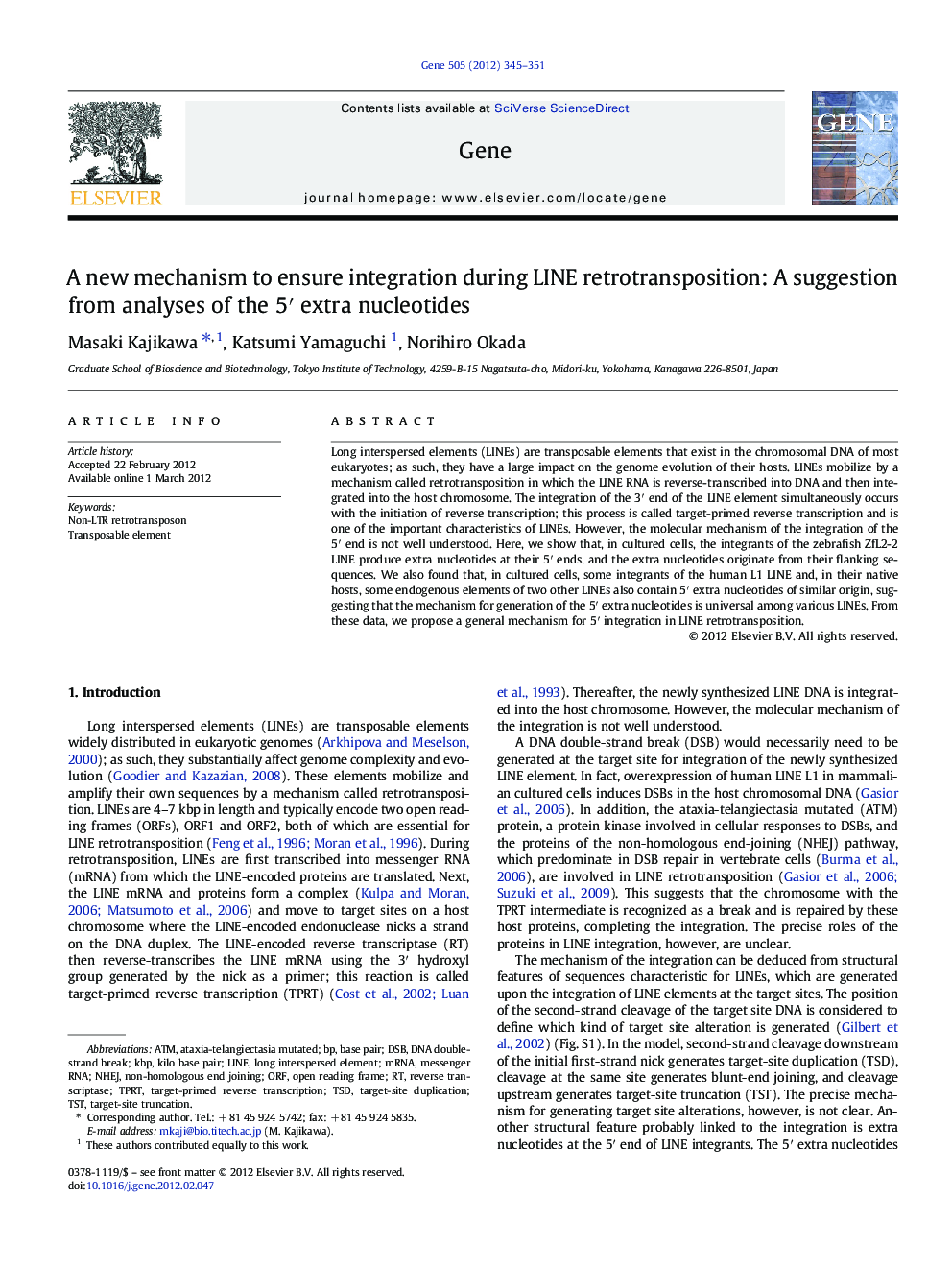| Article ID | Journal | Published Year | Pages | File Type |
|---|---|---|---|---|
| 2817774 | Gene | 2012 | 7 Pages |
Long interspersed elements (LINEs) are transposable elements that exist in the chromosomal DNA of most eukaryotes; as such, they have a large impact on the genome evolution of their hosts. LINEs mobilize by a mechanism called retrotransposition in which the LINE RNA is reverse-transcribed into DNA and then integrated into the host chromosome. The integration of the 3′ end of the LINE element simultaneously occurs with the initiation of reverse transcription; this process is called target-primed reverse transcription and is one of the important characteristics of LINEs. However, the molecular mechanism of the integration of the 5′ end is not well understood. Here, we show that, in cultured cells, the integrants of the zebrafish ZfL2-2 LINE produce extra nucleotides at their 5′ ends, and the extra nucleotides originate from their flanking sequences. We also found that, in cultured cells, some integrants of the human L1 LINE and, in their native hosts, some endogenous elements of two other LINEs also contain 5′ extra nucleotides of similar origin, suggesting that the mechanism for generation of the 5′ extra nucleotides is universal among various LINEs. From these data, we propose a general mechanism for 5′ integration in LINE retrotransposition.
► The 5′ extra nucleotides of LINEs originate from their flanking sequences. ► The origin of the extra nucleotides appears to be common among different LINEs. ► We propose a general mechanism for the 5′ integration in LINE retrotransposition.
